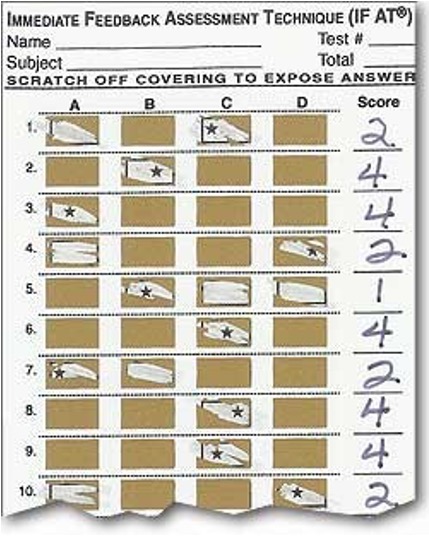Contents
- 1 COESP Spotlight Series
- 2 Beyond The Grades: Setting Students Up For Success on Exams
- 3 Prepping Students for Exams Using Student-to-Student Authentic Assessments
- 4 Two Models that Use Low-Stakes Assessmentsas Lead-ins for Exams
- 5 Approach #1: Student-to-Student Peer Review and Feedback on Practice Long-Answer Questions
- 6 Approach #2: “Online Learning Groups Using Student-led Conversations to Build Skills for Future Application”
- 7 Want To Bring This Into Your Course—Where Can You Start?
- 8 How Well Do These Methods Pivot BetweenRemote and In-Person?
- 9 Preparing Students For These Assessments
- 10 Student Feedback
- 11 Additional Resources
- 12 Two-Stage Exams: An Opportunity forCollaboration, Communication & Fun
- 13 Why Should You Try It?
- 14 What Are Two-Staged Exams Anyway?
- 15 Want To Bring This Into Your Course—Where Can You Start?
- 16 Does this Method Pivot BetweenRemote and In-Person?
- 17 Preparing Students For These Assessments
- 18 Student Feedback
- 19 Additional Resources
COESP Spotlight Series
Beyond The Grades:
Setting Students Up For Success on Exams
Words By: Jessi Nelson
In this article: Exams that support student learning through pre-exam activities and group exercises.
Find out more about: Integrating low-stakes assessment methods with high-stakes exams in an effective and authentic way & 2-stage exams that support student-to-student collaboration on tests.
Prepping Students for Exams Using Student-to-Student Authentic Assessments
Why Should You Try It?
It is no secret that standard exams can be super stressful for students. Whether we consider midterms or final exams, these high-stakes assessments often: contribute to a high proportion of students’ grades, are timed, closed book, and rely on students to remember and regurgitate as much information as possible in a short period of time. Finals are often also cumulative and encourage application of multiple theories or concepts introduced in class. Since the COVID-19 pandemic the use of controversial invigilation software, like Respondus, has also compounded stressors and raised many concerns.
That said, many instructors help prepare students by giving them ungraded practice questions, and sometimes answers are provided, in class or on course websites—but, is this enough to support meaningful student learning of the content beyond the classroom and that particular course? What can be done to provide students with meaningful learning experiences that promote application beyond the classroom and into the real-world???
Given the nature of these high-stakes tests and a growing body of literature and research surrounding authentic assessment methods and scaffolded learning experiences, integration of low-stakes assessments that prepare students for high-stakes assessments makes logical sense, especially when student-centered and inclusive learning is at the core of our teaching and learning in higher education

Two Models that Use Low-Stakes Assessments
as Lead-ins for Exams
- Student-to-Student Peer Review and Feedback on Practice Long-Answer Questions
- Online Learning Groups Using Student-led Conversations to Build Skills for Future Application
Approach #1: Student-to-Student Peer Review and Feedback on Practice Long-Answer Questions
Practiced by Dr. Kerry Ritchie, a faculty member in the Department of Human Health and Nutritional Sciences (HHNS) in a large second year physiology class of 375-400 students.
Dr. Ritchie has students respond to long answer questions, similar to questions they see on the two midterms. During the semester, there are two practice questions each worth 5% for a total of 10%. The questions are given to students before the two midterms, which fall on week 3 and week 8. Students answer the application style questions with the option of using their notes and may complete the question at any point during a 24-hr window. Answers are submitted into the Peer Evaluation, Assessment and Review (PEAR) platform, where students then review two of their peers and complete a self-assessment. For each practice question, 2.5% is allocated for their performance on the question, which is calculated using the two peer reviews and their self-assessment, all of which are completed using a marking key. The remaining 2.5% is received for completing two peer assessments and a self-assessment.

Approach #2: “Online Learning Groups Using Student-led Conversations to Build Skills for Future Application”
Practiced by Dr. Jennifer Monk, a faculty member in the Department of HHNS in a large fourth year nutrition class of 200 students.
Dr. Monk has students complete six literature critique assignments where they identify strengths and limitations of study designs, interpret results, make conclusions, identify a follow-up research question, and outline the experimental details of a follow-up study to address their research question. Students then discuss their responses in groups. In the fall 2020 semester, students were randomly assigned to a group of 8. Of the six literature critiques, four were worth 2.5% for which students were awarded for completing and trying them. This was done to practice and build their skills. The final two are more formal and worth 5% each (both of which are graded). These assignments lead into a timed literature critique test, where they read a detailed scientific abstract and go through the same critique process, and there is a similar component on the final exam as well.

Want To Bring This Into Your Course—
Where Can You Start?
Dr. Ritchie and Dr. Monk gave some great insights for any instructors wanting to integrate these methods into their courses:
- Having students gauge their own performance using clear and appropriate criteria and feedback is one element of authentic assessment, called evaluative judgement. You can include this by incorporating student-to-student discussions and evaluations. These two activities also promote learning and the development of communication skills.
- If you are doing an exam, create opportunities that prepare students for these tests, such as those outlined above.
- When designing questions, make them as realistic as possible, and by using scenario-based vignette style questions.
- If there is an opportunity to create an assignment, it does not have to be major, promote application of course material that integrates with their daily life (e.g. a blog, discussion post, etc.)
- The PEAR platform does require administrative time input from an instructor standpoint. It is good to familiarize yourself with the system.
How Well Do These Methods Pivot Between
Remote and In-Person?
In both cases, the platforms being used to facilitate discussions and provide feedback are done online. Peer evaluations done by Dr. Ritchie use the PEAR platform, and Dr. Monk expressed a more positive outcome for students when using online small group discussions on Course link compared to synchronous break out or in-person group discussions because it allowed students to have more time to critically think about and formulate their answers and give one another feedback.
Preparing Students For These Assessments
Dr. Ritchie prepares students prior to them using PEAR using two approaches:
- Explaining the rationale behind using peer-evaluation and how students earn their marks (combination of performance and completion of their reviews).
- Recommending students complete their practice question without notes first to see how much they know, and then referring back to their notes to strengthen their answer. This helps identify areas that need more studying.
Dr. Monk prepares students prior to the first literature critique doing the following:
- Discussing the intention of the assignments, to help students build skills in scientific literacy, critical thinking, communication, and professional etiquette. The class also discusses the importance of feedback and reflection and the significance of providing respectful and quality feedback.
- A demonstration of what a literature critique looks like in practice, done in-class, and with open discussion with students.
Student Feedback
Students in Dr. Monk’s Fall 2020 nutrition class were invited to participate in a survey after participating in the literature critique online learning groups. The response from students was “overwhelmingly positive,” says Monk. Of 194 students enrolled in the course, 174 responded. Students expressed agreement that online learning groups helped in the following ways:
- Met new people with perspectives unique from theirs (91%)
- Improved engagement in course content (90%)
- Improved understanding of course content (91%)
- Supported development of scientific literature critique skills (98%)
- Supported development of critical thinking skills (95%)
- Overall was a positive experience (96%)
- Feeling connected to other students while learning remotely (79%)
Additional Resources
- Beauchamp, D.M., Newton G., and Monk, J.M. (2021). Adapting Literature Critique Engagement Activities for Online Learning Due to COVID-19: Use of Online Learning Groups to Promote Scientific Literacy Capabilities in Undergraduate Nutrition Education. International Journal of Higher Education, 10(7), 19-33. https://doi.org/10.5430/ijhe.v10n7p19 – see attached pdf
- Link to PEAR software through OpenEd: https://peartool.opened.uoguelph.ca/
- Hobbins, J.O., et al. (in press). Does a Classroom-based Curriculum Offer Authentic Assessments? A Strategy to Uncover Their Prevalence and Incorporate Opportunities of Authenticity. Assessment and Evaluation in Higher Education. – see attached pdf
Two-Stage Exams: An Opportunity for
Collaboration, Communication & Fun

Why Should You Try It?
Picture this—rewind to your undergraduate studies (yes, it may be a long time ago for some of you). You finish your midterm or final, and you rush out of the room to check your answers. You flip through your notes looking for answers to any of the questions you weren’t 100% confident about.
Fast-forward to present day. You are the instructor, giving students the tests, and they are still doing the same thing at the end of the exam. BUT, what if we could change the ‘end-of-exam’ experience so students leave feeling happier and like they learned something from it? Wouldn’t you want that for students?
What Are Two-Staged Exams Anyway?
If at first you don’t succeed, try, try again!
Thomas H. Palmer in the ‘Teacher’s Manual’ (1840)
Have you ever heard of two-stage exams or the Immediate-Feedback Assessment Technique (IF-AT)? The IF-AT cards are the cool part here, pictured left because they are linked to the multiple-choice part of an exam. Upon completion and submission of the individual exam, students get into pre-determined groups and go over the multiple-choice questions again. However, this time, they can discuss the answers to the questions in their groups, and once they agree on a correct answer they scratch the IF-AT card box (A, B, C or D). If the answer is correct, a star will appear, and if it is incorrect, there is no star, and they try again. Once the correct answer is revealed, they move on to the next question. The exercise is game-like and introduces an element of fun after completing an individual exam. The score for each question is based on how many boxes are scratched before the correct answer is revealed, and the fewer the boxes scratched, the higher the score. The IF-AT cards really are an active learning demonstration of the mantra, “If at first you don’t succeed, try, try again.”

This method is thus called a two-stage exam because it has two stages: an individual stage and a group stage. It is currently being used by Dr. Wendy Keenleyside in the Department of Molecular and Cellular Biology for both smaller and larger courses (48-200 students) and in multiple year levels (2000 and 3000-level courses).
Want To Bring This Into Your Course—
Where Can You Start?
IF-AT Cards
- IF-AT cards from the website www.if-at.com/home/
- 10, 25, and 50 question sets with either 4 or 5 response options (A-D or A-E)
- The cards have a pre-set answer key that you match when designing an exam
- Each set of cards has a unique answer key
Individual Exam That Includes Multiple-choice Questions
- Dr. Keenleyside commented on the importance of designing good multiple-choice questions that test comprehension and include ‘incorrect’ answers that are common misconceptions. Seasoned instructors will be familiar with these, and newer instructors might turn to their colleagues, teaching assistants/graduate students, etc. for insight. Ultimately, the goal is to have questions that encourage discussion within the student groups so they can explain why an answer is ‘correct’ or ‘incorrect’ using judgement, critical thinking, and communication skills.
Group Creation
- Groups can be created as instructors see fit based on class size, course learning outcomes, other course-related activities (e.g. are there existing group components over the course of the semester for other learning activities that you want to maintain for the exam?), etc.
- Create groups that are inclusive and equitable. Dr. Keenleyside wanted to have diversity in the groups. To do so, Keenleyside had students respond to a Qualtrics survey, asking questions about academic performance, course pre-requisites, program of study and gender identity. Students were also able to input the name of ONE of their peers to be in a group with, should they want to.
- For students with Student Accessibility Services, students have been able to start their exams early if they require extra time and still join the class for the group stage. Other students with alternative accommodations can work through the IF-AT cards as it is suitable for them (e.g. discussion with a TA, an instructor, their exam aid).
On Exam Day

Does this Method Pivot Between
Remote and In-Person?
The IF-AT cards themselves are ideal for in-person use. That said, Dr. Keenleyside recently found a suggestion on the oCUBE (Open Consortium of Undergraduate Biology Educators https://www.ocube.ca/) membership forum about pivoting the 2-stage IF-AT method by using Microsoft Forms or Google Forms in place of the IF-AT cards. To set this up, instructors enter the questions into the Form and introduce branching logic from the backend, in which student groups select a response, and if it is correct, they are pushed to the next question, but if it is incorrect, they are cycled back to retry the question for reduced marks. The software tracks how many attempts are made for each question and awards points accordingly.
Online 2-Stage Exam Resources
- Microsoft Forms setup: https://support.microsoft.com/en-us/office/use-branching-logic-in-microsoft-forms-16634fda-eddb-44da-856d-6a8213f0d8bb
- For a 10-question template created by Dr. Keenleyside, follow this link and input your central login information: https://forms.office.com/Pages/ShareFormPage.aspx?id=K6Fivq0soUml-oX08xVqfckSTkuZn7FOnVDkXIg1op1URFI0WUhFQzEzWTBQN0RQQVA1VjJJMjdITC4u&sharetoken=yKuglIlxGzceMkVOUTzZ
Preparing Students For These Assessments
As with any new method, communication with students about the purpose of the method, how it will look in practice, and the importance of professional and respectful communication are essential points of discussion required before any exam.
Students were also assured their grade would NOT go down because of the group component. This was accounted for in the way grades were determined. There were three methods of grade calculation:
- Exam grade is split – 85% of exam grade from stage 1, individual portion and 15% from stage 2 group portion (their individual group only).
- This is invariably the highest grade for students
- Exam grade is split – 85% of exam from stage 1, individual portion and 15% from the average of all the stage 2 group grades across the entire class (used for students who are unable to participate in the group component).
- Exam grade is entirely individual – 100% grade from stage 1 individual portion (if group potion caused student’s grade to go down using two above methods).
Student Feedback
Dr. Keenleyside commented on the element of fun students expressed regarding the 2-Stage Exam format. During the second stage, the atmosphere is casual, and students commented on having “ah-ha” moments during the conversations with their peers. It was also a good opportunity to clarify and correct misconceptions, something that doesn’t often happen at the end of exams, particularly final exams when instructors do not see students again. Keenleyside also reported a decrease in students wanting to review their exam after grades are posted likely because they recognize where they went wrong, and for students unaware that they didn’t understand something, conversing with other students during the stage 2 group portion of the exam had the benefit of supporting their learning and clarification of misconceptions. This process also avoids the not-infrequent reaction “that was too hard and unfair” and may lead to additional “ah-ha” moments as students reflect on their learning skills.
Additional Resources
- Open Consortium of Biology Educators – oCUBE – https://www.ocube.ca/. It is an opportunity to work with and get mentoring from other like-minded instructors who want to try different methods of assessment. They also have virtual events.
- Two Stage Exams by Carl Wieman Science Education Initiative – October 2014 – see attached pdf
- 2-stage Exam Instructions for Students by Dr. Keenleyside – see attached pdf
- 2-Stage Exam THRN1307 Seating Plan (Sample Seating Plan) Dr. Keenleyside has used – see attached pdf



